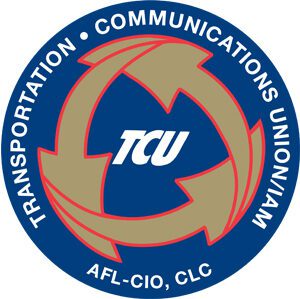PTC Video published by the American Association of Railroads (AAR).
One of the most important enhancements to rail safety is the timely implementation of Congressionally mandated positive train control (PTC) systems that will prevent collisions and save lives. Although the current language in the Rail Safety Improvement Act of 2008 and the Federal Railroad Administration PTC Rule will only require PTC installation on 40 percent of main track (69,000 miles out of the 170,000 mile system), the railroads continue to oppose the requirements of the law. These requirements must be implemented without further delay.
In 2008, Congress passed the Rail Safety Improvement Act (RSIA), which contained a long overdue mandate to implement PTC for certain passenger and freight rail operations under specific timetables. In 2010, the Federal Railroad Administration (FRA) issued a final rule implementing the new law and provided consistent standards and valuable guidance for approval of new technology components. Management teams, labor, and the manufacturers of the PTC components all participated in the rulemaking with FRA and reached consensus on almost all of the requirements. TTD supported the PTC mandates in RSIA and the new rules issued by the FRA that together achieved the proper balance between improving safety and providing the industry with a reasonable course to move forward.
The safety argument for swift implementation of PTC is hard to refute. PTC systems can stop trains before collisions and over-speed derailments occur. In addition, this technology would stop incursions into defined roadway work zones and would prevent collisions caused by improperly lined main line switches in non-signaled territory.
For example, in the 2005 Graniteville, South Carolina accident, a freight train operating in non-signaled territory encountered an improperly lined switch that diverted the train onto an industry track where it struck a parked locomotive. The resulting collision released 60 tons of chlorine gas, killed 9 people and forced the evacuation of 5,400 nearby residents for two weeks. A properly working PTC system would have alerted the operating crew and dispatcher and would have required restricted speed approaching the open switch. In the 2008 collision in Chatsworth, California that killed 25 and injured 130 others, PTC would have stopped the train and prevented the collision.
Moreover, this issue has a long history dating back more than 40 years. The National Transportation Safety Board (NTSB), shortly after the 1969 head-on collision of two Penn Central commuter trains in Darien, Connecticut, asked the FRA to begin investigating the feasibility of emergency train control requirements. When the NTSB created its “Most Wanted List” in 1990, PTC was an original item and was only removed after passage of the RSIA.
We recognize that implementation of PTC will require significant investments. For this reason, we agreed with the new law’s gradual implementation schedule giving industry an opportunity to plan for this change and implement the systems on the 40 percent of required trackage by the end of 2015.
We also support federal assistance for PTC and are prepared to work with the industry to secure federal funds for this effort. We are opposed to a provision in the FY2011 spending package that eliminates funding for Railroad Safety Technology grants and will push for restoration of these funds in FY2012. But we categorically reject the notion that implementation of a proven life-saving technology that has undergone years of study, evaluation and debate, should be delayed. It is also important to note that freight rail companies enjoy record profitability and productivity. It is simply disingenuous for these same companies to claim poverty and refuse to invest in critical rail safety technology.
It is important to remember that PTC is not designed to replace the current operating crews. PTC cannot operate the necessary and normal movements of trains. Instead, PTC is a GPS-based technology that provides an overlay safety system that can only apply the brakes and stop the movement of the train when the system determines that the operating crew could exceed their track authority or authorized speed. PTC systems provide a significant summary of all necessary operational information for the crew with a moving map display available for all crew members, but the only active function of the system is to stop the train when danger is imminent.
For PTC to function properly and for the safety benefits to be fully realized, it must be integrated into the daily routine of operating crews, dispatchers, signalmen, and roadway workers. Adequate training for all involved employees and managers will determine the success of the application of this new technology.
Safety is critical to front-line rail employees, to passengers who rightfully expect the industry to deploy the latest technologies that make train travel safer, and to communities across the country through which these rail operations pass. Once implemented, PTC technology will raise the bar on safety while also ensuring the continued economic health and success of this industry. Safety makes good business sense in the rail industry. PTC technology must be deployed without further delay.

